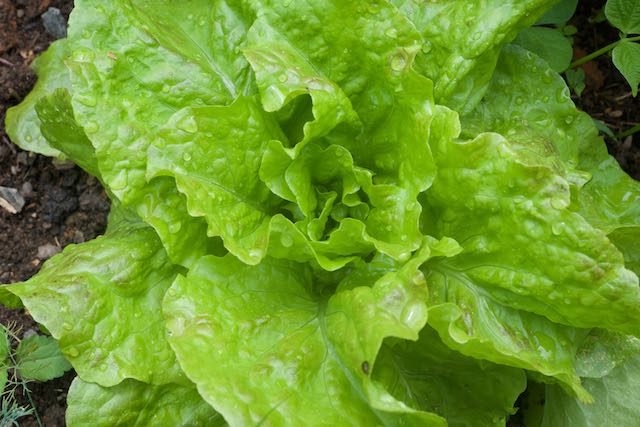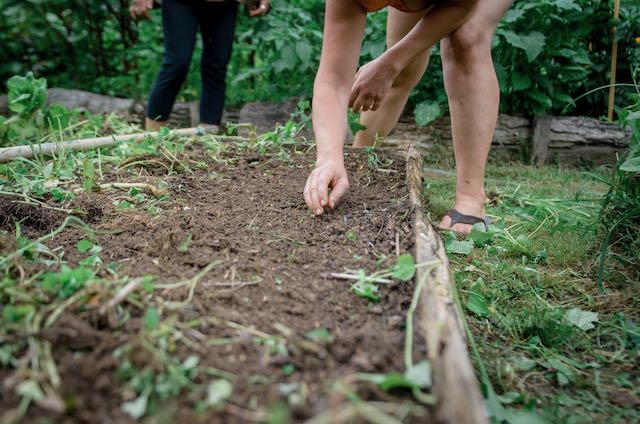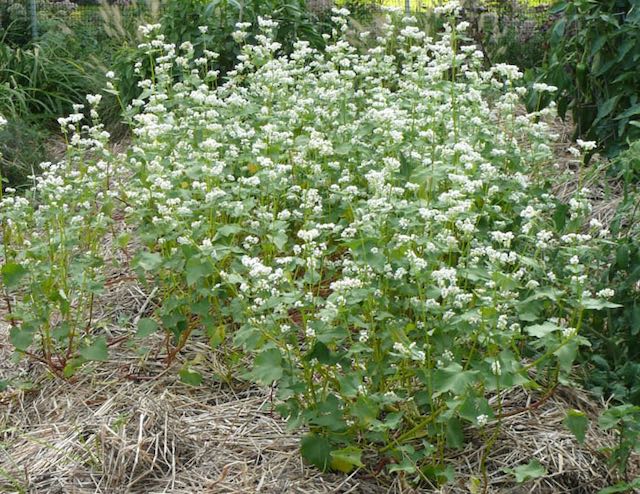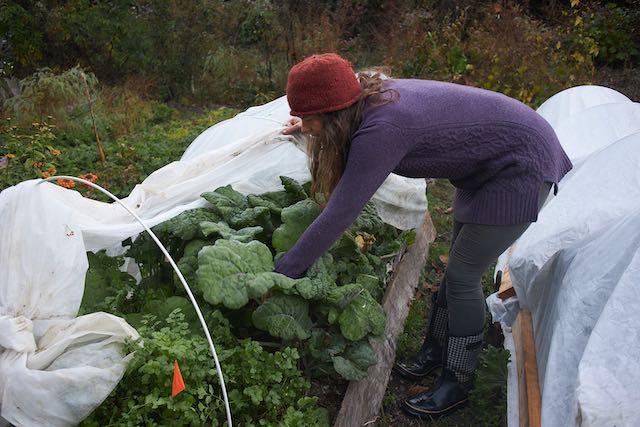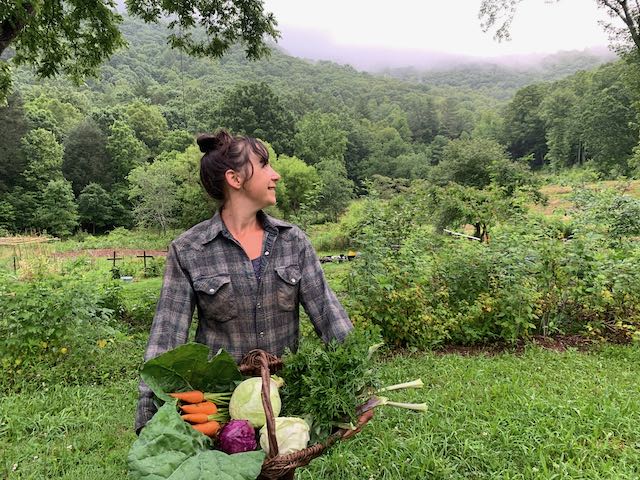If your idea of vegetable gardening only involves a spring flurry and summer bounty, it’s time to explore the rewarding world of fall gardening and what to plant for success. Just imagine: sowing seeds when the soil is plenty warm for high germination rates; maturing crops after the first frost has knocked back pest populations; gathering fresh vegetables for your table well into the fall and even winter.
Fall gardening can be easier and lower-stress than spring and summer growing. Plus, lots of crops that wither in summer’s heat will thrive and even grow sweeter as temperatures dip down toward freezing. With good planning, appropriate timing, and a taste for greens of all kinds, your fall gardening experience is bound to be abundant and delicious.
When to plant a fall garden?
The key to a successful fall vegetable garden is timing. Indeed, if you start thinking about your fall garden when autumn has already arrived, it’ll be too late for many crops.
In most of the temperate world, mid to late summer is the time to begin sowing seeds for fall and winter harvest (between July and August).
Some quick-maturing crops like radishes and lettuce can be sown through early fall. However, slower-maturing crops like carrots, beets, and broccoli will need to be planted by midsummer. That’s because they need time to mature before cold temperatures and shorter day length slow their growth.
Of course, exact planting dates will depend on your location; specifically, the expected first frost date in your area. Additionally, the “days to maturity” of the crops you’ll be growing will influence when they need to be planted. Keep in mind that this time period can vary widely for different varieties of the same crop. For example: Mokum carrots mature in 48 days, whereas danvers carrots take 75 days. That’s a big difference!
To figure out specific planting times for your fall garden, you can use this handy seed planting calculator to get an estimate. Then, refer to the varieties that you’ll be growing, and dial in timing more specifically. Also, chatting with other growers in your area can provide a wealth of place-based, experiential knowledge. Keep in mind that cool weather crops will keep growing if temperatures are in the upper 40’s (℉) or warmer, but will pretty much halt when it’s colder than that, even if they aren’t killed by freezing.
What to plant for a fall garden?
I’m sorry to break this news, but you cannot grow tomatoes, peppers, melons, cucumbers, or eggplants in the fall and winter, at least not in the temperate world. That’s because, botanically speaking, these are all fruits.
The best vegetables for fall gardening are greens and root crops.
Luckily, there are dozens of tasty and nourishing greens (including herbs) and root crops to brighten fall and winter tables, that thrive in cooler weather.
Instead of offering one long list here, we’ve broken up our suggestions into categories of “easier” and “trickier.” Additionally, we note which of these crops is quick-maturing (Q), and can be sown and harvested within one season.
Hopefully, this more robust information will help you choose which crops to plant, given your experience level and situation.
To get more in-depth information and video-based instruction on fall gardening, check out our free course:
Summer Planting for Fall and Winter Harvests.
Easier vegetables for fall gardening
- Arugula (Q)
- “Asian greens.” This is obviously not a kind of vegetable, and the term reflects the Euro-centrism that pervades gardening here in the U.S. There’s a whole world of amazing plants in this category; most are brassicas and many are quick-maturing; check out Kitazawa seeds to explore “Asian greens” more thoroughly
- Chicory and radicchio (some are Quick)
- Cilantro (Q)
- Collard greens
- Garlic. Actually planted in fall and harvested the following summer
- Kale
- Lettuce (Q)
- Mustard greens (Q)
- Pea greens/field peas/Austrian winter peas
- Radish (Q)
- Turnips. Salad turnips are Quick maturing, while storage or full-sized turnips take a bit longer
- Swiss chard
Trickier vegetables for fall gardening
- Beets
- Broccoli
- Brussels sprouts
- Cabbage
- Carrots
- Cauliflower
- “Chinese” cabbage. This delicious vegetable doesn’t have a Chinese passport and is a traditional crop in many areas of East Asia, including Korea where it is a main ingredient in the national cultural and culinary treasure, kimchi.
- Endive and escarole
- Fennel
- Kohlrabi
- Spinach
- Rutabaga
Soil fertility for fall gardening
Successful fall gardening requires the same rich, fertile soil that healthy crops need any other time of year. Since fall vegetables will do a lot of growing while the weather is still warm, it’s especially important to bolster fertility during the beginning of their lives. This may mean adding in extra compost, manure, or other soil amendments before planting them. Or, you might choose to use liquid fertilizers like diluted urine or fish emulsion as the plants grow.
Whatever you do, keep in mind that any summer crops that preceded your fall veggies pulled nutrients from the soil. This means that what you plant for your fall garden might get the short end of the fertility stick if you don’t tend to the soil. If your soil is poorer and you don’t have access to amendments, consider planting a fall cover crop instead of more vegetables. Over time, this practice will build fertility so that future fall gardening is much more successful.
Seeds for fall vegetable gardening
In order to plant a fall garden, you’ll probably need some seeds. Even if you plan to buy transplants, some crops do much better when direct-sown from seed right into garden beds (see the following section for a list of these).
Most of us gardeners make a big seed order in the winter or early spring from our favorite independent seed companies. Of course, it’s ideal to include seeds for fall crops in this order rather than making two orders, paying for shipping twice, and risking sold-out varieties. However, if you didn’t include fall crops, or didn’t make an order at all, it’s not too late! Most seed companies will fill and ship orders within a week, so send yours in as soon as possible to make sure you have what you need for fall gardening.You may also be able to buy seeds locally at a farm and garden store, food co-op, or even your church or community center.
Direct-sowing vs. transplanting for the fall garden
In order to plant vegetables in your fall garden, you have two options: direct-sowing and transplanting. The first involves sowing seeds right in the ground; whereas transplanting means sowing seeds in pots or flats (to grow your own), or buying transplants from a nursery. Both methods have pluses and minuses.
Direct-sowing is simple in that you just put seeds in the ground and don’t have to worry about transplanting later. Plus, some vegetables are very sensitive to transplant shock and fare much better without a move. In most cases, direct-sowing involves thinning and requires protecting baby plants from pests and competing weeds. During the hot summer months, direct-sown seeds will require watering at least once a day, maybe twice for moisture-sensitive seeds like carrots and cilantro. Of course, in order to direct-sow, you’ll need an open space in the garden, which, during midsummer is certainly not a given.
Transplanting fall crops is a great way to take advantage of quicker growth during summertime warmth, without needing to make space in your bustling summer garden for new plants. Also, during the height of summer, pests can be a real challenge in many areas. Young plants tend to be more susceptible to pests, and it’s easier to protect transplants in pots than seedlings out in the field. Similarly, watering transplants, which can be kept all in one area, is simpler and easier than watering seeds sown here and there throughout the garden.
Some crops just don’t handle transplanting well. With these, your best bet is almost always to sow directly. Other crops can “go both ways,” while a few are almost never sown directly. Here are some lists for your reference:
Fall crops to direct-sow
- Cilantro
- Carrots
- Beets
- Radishes
- Turnips
- Pea greens
- Fennel
- Rutabagas
Fall crops that can either be direct-sown or transplanted
- Arugula
- “Asian greens”
- Chicory and radicchio
- Collards
- Kale
- Lettuce
- Mustard greens
- Swiss chard
- Endive and escarole
- Spinach
Fall crops to transplant
- Broccoli
- Brussels sprouts
- Cabbage
- Cauliflower
- Kohlrabi
- “Chinese” cabbage
Watering your fall garden
Summer’s heat can really dry out the soil. As a result, watering is a crucial part of tending a fall garden, especially if you direct-sow any crops. Fortunately, most seeds will germinate quickly in warm soil, so daily—or twice daily—watering doesn’t have to last forever.
Then, after the temperature has dropped, you won’t need to water as much, but you’ll still need to make sure fall and winter crops get the moisture they need. This can be tricky in freezing temperatures, especially if you’re used to using drip tape or other irrigation systems that don’t function in icy conditions. In this case, you’ll need to figure out an alternative like hand watering.
Before you start planting fall crops, make an irrigation plan. This can be as simple as double-checking you have enough hose or a good watering can to hand-water seeds and young plants. Or, it can mean setting up drip tape in the areas where you plan to plant fall veggies.
Making space for a fall garden
The idea of planting a fall garden in July might have you shaking your head thinking, where am I going to put anything else in this garden?! For most home gardeners, space is at a premium, so summer and fall plantings will have to overlap a bit and make room for one another.
One great way to ensure you have space for fall gardening is to plant a summer cover crop like buckwheat or cowpeas to prepare an area. With this approach, all you’ll need to do is mow down the cover crop and voilà, there’s your fall garden. Once you get in the rhythm of fall and winter growing, you can follow overwintered and early spring crops with one of these heat-loving cover crops, which in turn will make way for the following fall’s planting.
Another option is to simply follow summer crops with fall crops, as they peter out. Some examples of vegetables that may be done by July are: beets and carrots, cabbage, kale, broccoli, collards, lettuce, cilantro, dill, or basil. In addition to these, if you planted cucumbers or zucchini early in the spring, they may be on the decline by the time you’re ready to plant fall crops.
Of course, this space issue is one great reason to use transplants for your fall gardening, rather than direct sowing.
Season extension options
The other “golden ticket” of successful fall gardening (along with timing), is season extension. There are lots of options when it comes to protecting plants from cold and extending their growing season. They include:
- Row cover
- Greenhouses/high tunnels
- Cold frames
Row cover
By far the simplest of these is row cover (also called “floating row cover”); it’s a way to create a warmer microclimate within a tunnel around your plants. There are various options out there for row cover material. All of them have been specifically designed to be lightweight and strong, while allowing easy penetration of water and light and holding heat well. In addition to the material itself, you’ll need supports to hold it off of your plants, plus some way to anchor it down so it doesn’t blow away.
We show you a very effective and low-cost way to set up a row cover in our free course on Summer Planting for Fall and Winter Harvests.
Greenhouses and high tunnels
Greenhouses and high tunnels are more permanent and resource-intensive ways to extend the growing season. They are totally awesome if you have the space and money to put them up, but are not accessible to many home gardeners. To learn more about high tunnels, including opportunities for technical and financial support with them, check out this informational page from the USDA Natural Resources Conservation Service. To learn about greenhouses and other kinds of larger-scale protected growing (and fall and winter growing in general), we highly recommend the book Four Season Harvest by Eliot Coleman.
Cold frames
Finally, cold frames are basically enclosed boxes with clear glass or plastic lids. They fall between row cover and greenhouses in terms of complexity, and can be built at home at a fairly low cost. Unlike row cover, cold frames cannot easily be dismantled and stored in between use, and are rather bulky. However, if you’ve got the materials and space for them, they’re great, especially for greens, herbs, and other low-growing plants. Keep in mind that cold frames cannot accommodate broccoli or cabbage or other high-profile vegetables that take up more room. Again, check out Four Season Harvest by Eliot Coleman to learn more about cold frames.


Joyful fall gardening
Harvesting and eating from a fall garden will obviously bring great joy to the gardener—and her friends. But, the simple act of fall growing can be jubilant, too. Gardening year-round brings you outside on crisp autumn mornings, and keeps you connected with the cycles of the earth even as many folks are huddled indoors. Along with all the details we’ve shared above, our most basic advice for you to find joy in fall gardening is to start small, with what’s easy, and what you love to eat. And, as you experiment and learn, allow yourself to reap the rewards that your relationship with the garden has to offer.


